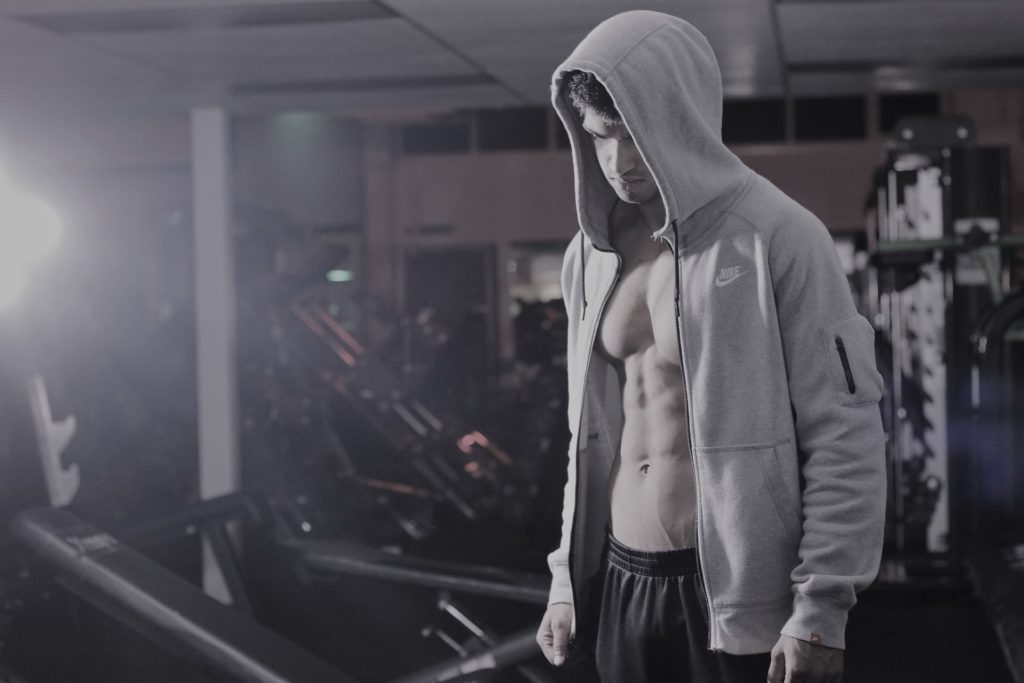
So you walked onto campus, sized yourself up with the the closest guy you saw and asked yourself…
Hey… is that guy bigger than me?
And that’s when you wanted to know how to start bodybuilding in college.
Haha… OK. I’m not going to make your reasons as insecure as that, but I’ll tell you this.
College will be one of those eras of your life in which you’ll make some really fun and awesome memories.
And having jacked biceps and shredded abs is only going to make it better.
Yes, it’s going to take a little effort to put into action, but once you start seeing those visual changes in the mirror…
…you’ll wonder why you didn’t ask how to start bodybuilding in college sooner.
Beginner Bodybuilding Workout Plan
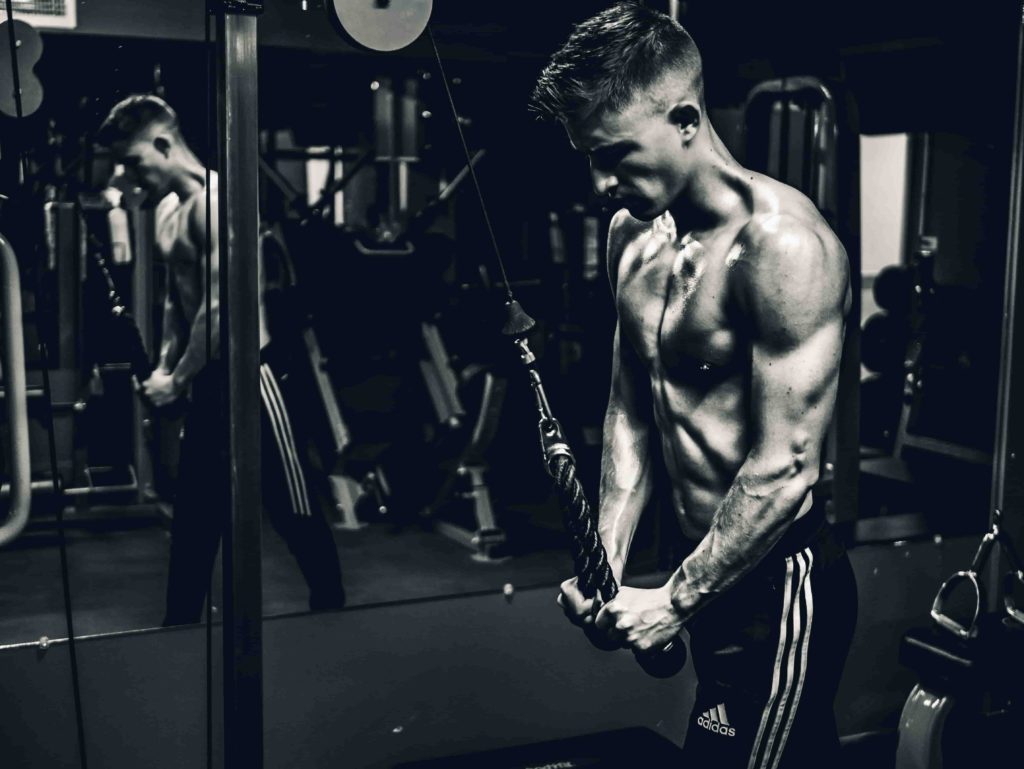
Just to get something out on the table, being a beginner and just learning how to start bodybuilding is actually pretty awesome and here’s why…
As a beginner, your body is going to recover so much faster than any advanced lifter.
The reason this is important is because you’re able to apply more resistance more frequently than you would an intermediate, advanced, or elite lifter.
So you can go from workout to workout adding 5 or even 10 lbs to your lifts every session and see more dramatic changes in your body quickly.
Now let’s talk about what your workout plan should look like…
Train in the Gym 3x Per Week
As a beginner, it’s not necessary to train more than 3 times per week.
I know, so and so lifts 7 days a week and he’s completely jacked!
Well, I don’t give a flaming fart.
The guys you idolize with massive arms and chests are typically advanced lifters (who may or may not also be on a bunch of anabolic drugs too) and they need to workout that much to see consistent gains from week to week.
You don’t.
In the beginning stages of how to start bodybuilding, your body can recover much quicker than those guys you idolize and it’s optimal for you to wait 24 hours between each session to come back fresh and rested to kill it next time.
So your workout schedule will look something like:
- Sunday – Train
- Monday – Rest
- Tuesday – Train
- Wednesday – Rest
- Thursday – Train
- Friday – Rest
- Saturday – Rest
Note: I don’t do the typical M/W/F lifting schedule because that’s when everyone else is in the gym. Going S/T/Th allows you to avoid peak gym times and you get to spend one of those sessions on the weekend when you have more free time anyway.
Perform These Compound Exercises
You should start each workout with a big compound exercise that works multiple muscle groups.
This means exercises like:
- Barbell squats
- Deadlifts
- Bench press
- Overhead press
- Chin-ups
- Rows
It’s good to put these at the top of your workout because they’re more taxing on your central nervous system (CNS) than any isolation or accessory exercise you perform like curls or tricep push-downs.
Plus, there’s a psychological benefit to getting these more strenuous exercises out of the way first.
If you have weaker willpower, you may be tempted to cut your workout short if you know your last exercise is frickin’ barbell squats.
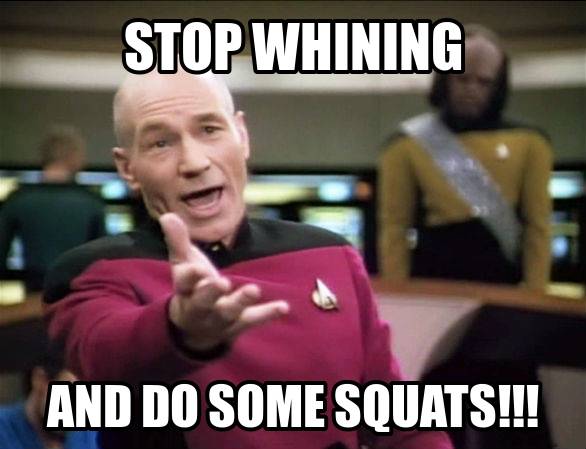
Do 3 Sets of 5-8 Reps Per Exercise
There’s been a lot of research done on how many sets and reps you should do for each exercise in order to fully work the muscles to maximum adaptation.
Well, it’s somewhere between 2 and 3 sets per muscle group.
This is why popular programs like Starting Strength, StrongLifts, Body Shred, and others advocate 3 sets per exercise.
If you’re intermediate, you can actually get away with 2 sets, but if you’re just learning how to start bodybuilding, stick to 3.
What about reps?
I could do a whole article just on reps and sets, but for the purpose of of this beginner workout, 5-8 reps will work well.
This puts you right in the meaty portion of building strength, but also hypertrophy at the same time.
Do All Exercises in Each Session
Now, this is going to go against a lot of advice I’m sure you’ve already heard, but as a beginner, you shouldn’t split your body parts into individual workout sessions… yet.
Again, this is an intermediate/advanced training method and that’s not for you.
Instead, with your amazing recovery abilities, you should perform these 3 or 4 exercises in all 3 sessions:
- Squats
- Bench press
- Deadlift
- Overhead press
You’ll be able to workout like this for at least a few weeks and still be able to add 5-10 lbs to the bar each time.
If you were to split those exercises into their own sessions, it would take way longer for you to actually peak before adjusting your programming.
Plus, performing those exercises more often allows you to get better at… performing the exercises.
Bodybuilding without Gym Memberships?
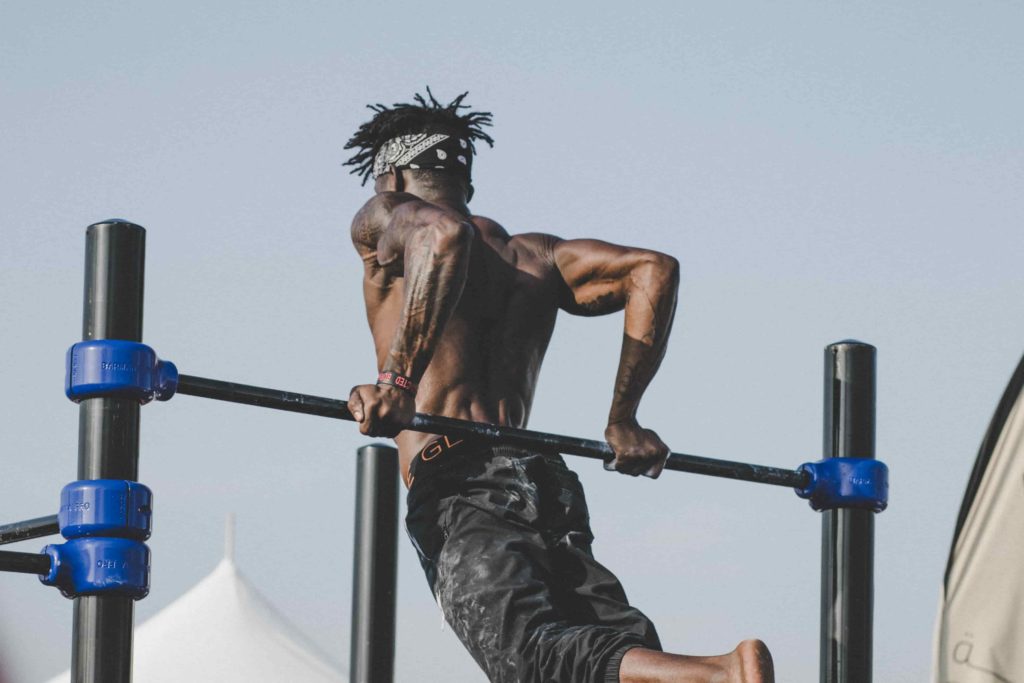
Now let’s say you don’t have access to a gym (which I think is a crime).
[Tweet “If your university doesn’t offer you a free gym, you should sue.”]
I mean, come on! Why the hell doesn’t your university offer a gym to all its students??
(I’m muttering obscenities under my breath.)
But if that’s really the case, and you’re still trying to figure out how to start bodybuilding – you’re not dead in the water. You can still build muscle and get a great-looking body in the process.
It might just take a little longer.
If this is the case, here’s what you need to focus on primarily…
The Most Important Thing is Progressive Overload
Progressive overload is the process of increasing the resistance on your muscles over time to force adaptation.
So by adding more sets, reps, or weight you can force your muscles to grow stronger and bigger.
As long as you can create that stimulus, it doesn’t matter whether you’re using a barbell or your own body weight.
However, the reason it’s preferred to workout in the gym is because you won’t cap out on resistance. (There’s plenty of weight to use.)
But when you’re just beginning (and if you’re not looking to become a mass monster) bodyweight exercises and calisthenics are plenty to stimulate progressive overload.
You Can Build Muscle with Bodyweight Training
Like I just said, barbell training is preferred because there’s essentially no limit on the amount of resistance you can apply for muscle growth.
But that doesn’t mean you still can’t build an awesome body with just bodyweight exercises… because you can.
If you’re looking for a good bodyweight training program, I recommend Kinobody’s Bodyweight Mastery.
More specifically, there’s an awesome program by Kevin Kreider called Lean Body Fat Fix that was made specifically for guys without gym access and I think it would be perfect for working out in a dorm.
Beginner Bodyweight Exercises to Build Muscle
So what kind of exercises can you do without a gym when you’re learning how to start bodybuilding?
I’m glad I asked for you.
- Chin-Ups/Pull-Ups – Use this exercise to build your biceps, upper back, abs, even some upper chest. You’ll need something like an Iron Gym to attach to a door frame to do these.
- Push-Ups – There are so many variations of push-ups with inclines and different emphasises that you really can’t run out of resistance. Great for your chest, abs, and triceps.
- Pistol Squats – You’ll have to start by grabbing a door frame for balance, but you’re essentially doing a one-legged squat and holding your lifted leg out in front for balance. This will work your quads, hamstrings, and calves like nobody’s business.
Bodybuilding Diet Plan for Cutting
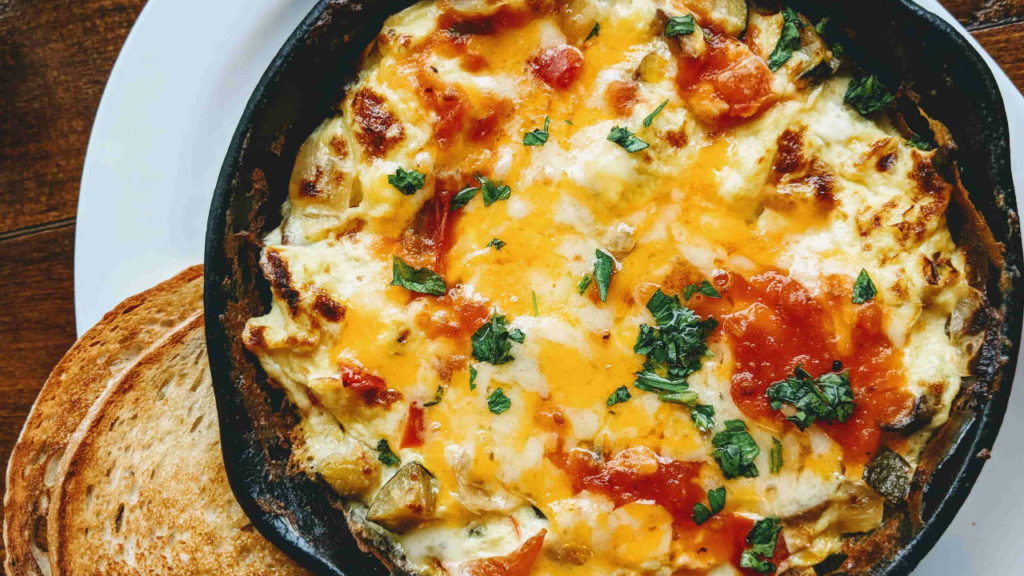
One of the most frequently-asked questions I get here at Campus Gains about how to start bodybuilding is…
Well, most of the shredding happens in the diet.
You need to have a good grasp on your calories, macros, and just staying consistent long enough for the changes to happen.
Let’s talk about each part…
Eat in a Caloric Deficit
The first and most important thing you need to do with your diet is eat in a caloric deficit.
This simply means consuming fewer calories than your body burns to stay alive.
(Sure you can achieve this with a mixture of cardio, but it’s better in the long-term to adjust your diet instead.)
So take whatever your maintenance calories are per day and reduce them by 10-20% to create a modest deficit.
This should be enough to see at least 1 lb of weight lost per week if you’re above 10% body fat.
(15-20% for women.)
And if you’re already fairly lean, this will create a slower rate of weight loss so you can still maintain your muscle mass in the process.
Eat High Protein
The most important macronutrient for building muscle is protein and you need to make sure that you eat plenty of it.
There are a number of recommendations on how much to eat and it actually varies by what your goals are.
If you’re trying to gain more mass, you can actually eat around 0.8 g per 1 lb of target body weight.
Oppositely, when you’re losing weight, your body is more at risk of losing lean body mass, so it’s preferential to keep your protein intake a bit higher.
So in the case of cutting, try to eat at least 1 g per 1 lb of target bodyweight.
Eat High Fiber (Or Typical Recommended Intake)
I find that most people, until they start growing older, don’t eat enough fiber.
(Myself included)
According to the American Heart Association, men should eat 38 g and women should eat 25 g of fiber per day.
There are a couple reasons it’s important for you to get enough fiber when you’re focusing on how to start bodybuilding:
- It keeps you regular. I know it’s gross to think about, but when you‘re eating a higher protein diet, you won’t be able to have consistent, healthy bowel movements unless you eat enough fiber. Remember that.
- Fiber makes you feel full. As you decrease your calories over time, your body is going to signal that it needs more calories (even if it doesn’t) and increase your appetite. You can stifle your hunger by eating more fiber in your diet.
It Doesn’t Matter How Many Meals Per Day
You know how every single bodybuilding website says that you need to eat 5-6 meals per day for proper protein synthesis, nutrient-timing, and some third bullshit reason…
Turns out that doesn’t really matter for overall muscle gains.
The most important thing for your muscle gains and fat loss is to make sure that you eat all the calories you need before you go to bed.
That’s it.
You can do that in 25 meals or 1 meal – it’s really up to you.
I actually prefer in only 2 meals to be honest.
But let’s talk about your meals…
How to Make Bodybuilding Meals

Being able to cook your own food for the purpose of bodybuilding is really helpful.
I can remember when I lived at home, I was subject to whatever it was what my mom wanted us to have that night.
No offense to my mom since she only wanted what was best for me, but not everything she cooked was “bodybuilder friendly.”
That’s why learning the basic cooking skills you need to make your own meals is crucial… and really not that hard.
In fact, it’s actually quite liberating and once you get the hang of it, you’ll probably prefer it to eating out or being served by anyone else.
But it all starts with shopping…
Buy Everything in Bulk to Save Money
Money is a big issue in college because… you may not have a lot of it.
That’s why, it’s a huge money-saver to sign up for memberships at “club” stores like:
- Sam’s Club
- Costco
- BJ’s Wholesale Club
Yes, you do have to have a membership to shop at these stores, but there’s no other place you’re going to find 10 lbs of chicken breast for like $15.
The membership practically pays for itself within a month the more you use it.
- 10 lbs of brown rice for $4.62
- 36 eggs for $3.80
- 42 oz of frozen steak for $11.98
Just a few examples of what you can get at the Sam’s Club near me.
Keep Protein Well-Stocked at All Times
Since proteins are the building blocks of your lean muscle tissues (and arguably the most important thing in your diet), you need to make sure you have it well-stocked at all times.
When you go to the grocery store, keep these essentials in your mind like:
- Eggs
- Egg whites
- Chicken breast
- Steak
- Fish
- Greek yogurt
- Cottage cheese (if you like it)
- Fat free cheese
These foods should be the basis of most of your meals to make sure you’re getting enough protein.
Then if you need some snacks during the day (which I don’t encourage) or you’re in a bind where you find you don’t have a slab of meat readily available, you can turn to things like:
- Protein bars
- Whey or casein protein powder
- Nuts
Cook Everything in Multiple Portions
When you learn about how to start bodybuilding, you might hear about something called “Meal Prep Sunday”.
This is when they spend the whole day cooking their multiple 5-7 meals for every single day of the week.
(I already stated earlier that the most important thing is to just get all your calories in before you go to bed no matter how many meals you eat.)
But one very simple meal prep hack is to just cook multiple portions each time you cook for a single meal.
- If you decide to have a steak for dinner, cook 2-3 of them instead of just 1.
- When making chicken breast, cook a whole pan in the oven.
- Making rice on the side? Cook enough for tomorrow and the next day too.
It doesn’t take that much more energy and it saves having to ruin a whole Sunday when you really need that time to study or do homework.
Make Foods that Go with Everything
Another key tip for making bodybuilding meals is to make foods that easily go with dishes.
Rice is one of those foods.
You can have a side of rice with almost any meat like chicken, steak, or fish…
…And rice even goes with eggs pretty well like in most stir fry or hibachi recipes.
And if your meals seem bland, dress them up with sauce.
You don’t necessarily need some specialty recipe to make your meals taste good.
They just need to be versatile enough that whatever you have on hand can be swapped with other things and made delicious without much effort.
That’s How to Start Bodybuilding in College
As you can see, learning how to start bodybuilding in college takes a little getting used to, but it’ll be second nature before you know it.
What’s your bodybuilding plan?
Leave a comment below and tell me how you plan to transition into a bodybuilding lifestyle while you go to school.

